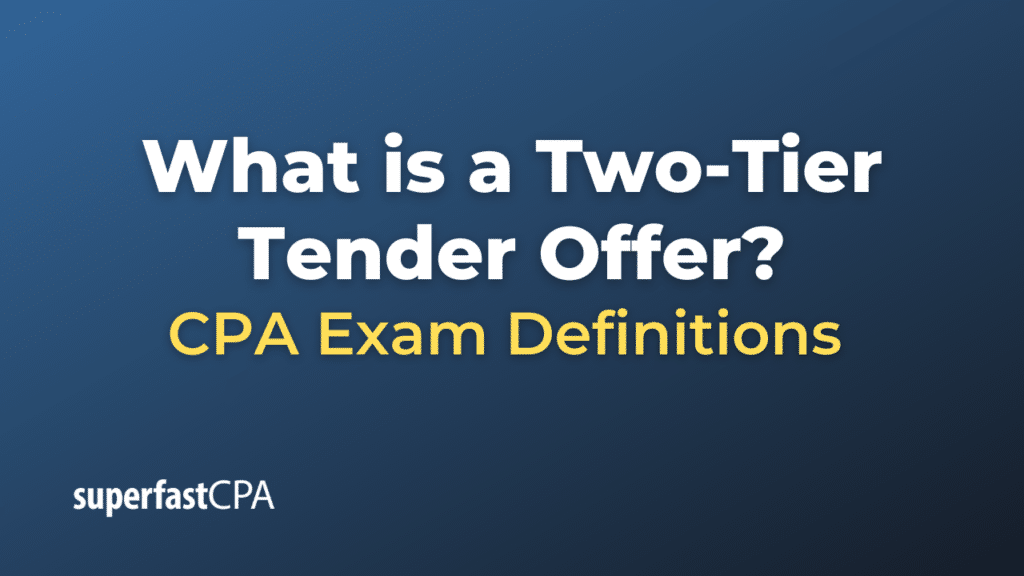Two-Tier Tender Offer
A two-tier tender offer is a takeover strategy used by an acquiring company when seeking to purchase a target company. This approach offers two different prices to shareholders based on when they choose to sell their shares. The tactic can sometimes be viewed as coercive, as it’s designed to encourage shareholders to act quickly. Here’s how it works:
- First Tier: The acquiring company offers to buy a certain number of shares of the target company at a specific price, which is typically higher than the market price. This offer is for a limited number of shares and is available for a short period.
- Second Tier: Once the shares from the first tier are acquired, the acquiring company will then purchase the remaining shares at a lower price, often at or just above the market price prior to the announcement of the acquisition.
The intention behind a two-tier tender offer is to get the shareholders of the target company to tender their shares quickly, fearing they might receive a lower price if they wait. By doing so, the acquiring company can gain control of the target company more swiftly.
However, two-tier tender offers are controversial. They can be seen as coercive because they essentially push shareholders to sell their shares quickly to avoid getting the lower second-tier price. In response to these tactics, some jurisdictions and regulatory bodies have put measures in place to protect the rights of minority shareholders and ensure that all shareholders are treated fairly during takeover attempts.
For any company or shareholder involved in or considering a two-tier tender offer, it’s crucial to be aware of the relevant regulations, potential challenges, and the perception it may create in the market.
Example of a Two-Tier Tender Offer
Let’s use a hypothetical scenario to demonstrate a two-tier tender offer:
Company A wants to acquire Company B.
Company B’s Current Share Price: $50 per share.
First Tier of the Offer:
Company A announces that it is willing to buy up to 60% of Company B’s shares for $70 each. This price is enticingly higher than the current market price. The offer is valid for 30 days. Shareholders who act quickly can sell their shares at this premium price.
Second Tier of the Offer:
Company A states that after the initial 30 days, they will buy all remaining shares of Company B for $55 each, which is just slightly above the original market price but much lower than the first-tier price.
Here’s the effect:
- Immediate Reaction: Many shareholders of Company B might rush to sell their shares during the first tier to avail of the $70 price, fearing that if they wait, they will only get $55 per share in the second tier.
- Control Acquisition : With a significant portion of shareholders selling in the first tier, Company A can swiftly secure control of Company B.
- Completion: After the 30 days, Company A proceeds to buy the rest of the shares at the second-tier price, completing the takeover.
In this example, the two-tier tender offer acts as an incentive for Company B’s shareholders to sell their shares quickly. They would prefer to get the $70 per share in the first tier rather than the lower $55 in the second tier.
However, it’s worth noting that such strategies can draw scrutiny and criticism. Shareholders who miss out on the first-tier price might feel coerced or unfairly treated, especially if they believe that the true value of their shares is closer to the first-tier price. As a result, regulatory oversight and shareholder protection measures might come into play in real-world scenarios.













